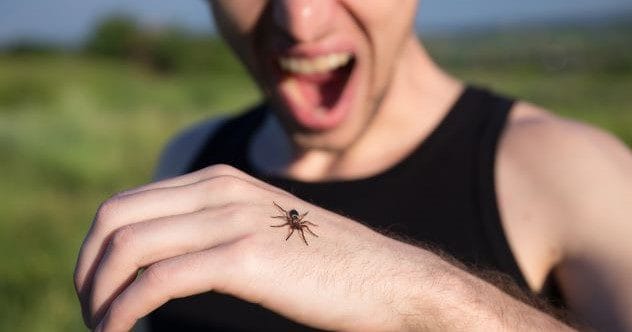Everyone’s afraid of something. Many fears and phobias are common among most human beings. Heights, spiders, snakes, or public speaking freak many people out. However, cultural differences can cause phobias to develop among specific peoples or regions that are just plain bizarre.
South Korea: Death by Electric Fan
South Korea is known for its music and physically intimate culture. However, many South Koreans believe that sleeping in a closed room with an electric fan risks death from hypothermia.
Despite being normally logical people, they have this belief. Fans only move air currents, and any feeling that they are cooling you off is an illusion. Even in the winter, you cannot get hypothermia due to an electric fan. While fewer people believe it today due to increased scientific understanding, it is still a widespread belief.
Japan: Fear of Offending Others
The Japanese are well known for caring about face and reputation. Due to these cultural traits, many Japanese people develop Taijin Kyofusho, a psychological disorder that is a subset of anxiety disorder.
This disorder is characterized by an extreme fear of offending others with inappropriate social behavior and social skills. Along with the other symptoms, it also brings the fear of shaming family and friends. Someone with a bad case of this disorder would find it hard to go out in public for fear of embarrassing themselves and shaming their family.
Russia: Embodying Poshlost
Many Russians fear being seen as an example of poshlost. This Russian word doesn’t really have a direct translation. Essentially, it describes someone who is rich and puts on airs as if they are important but is mostly nihilistic and a drain on resources while living a life of pure ennui.
Russians are defined by living through struggle. They are proud to get by without a lot and have little respect for over-preening, lazy people.
America: Severe Anxiety Over Potential Ambulance Costs
Americans may have the same fears as everybody else, but one big cultural fear really terrifies them. It isn’t monsters that go bump in the night.
If you want to scare an American, tell them horror stories about ambulances and how much it costs to pay for them afterward. Not long ago, a story circulated of an injured woman who begged people not to call an ambulance for her because she didn’t have good enough insurance and couldn’t afford to pay for it.
Many people don’t have insurance that will cover all of the ambulance costs. An average ambulance ride costs about $1,000, leaving many people terrified of the very idea.
Mexico: Fear of Being Seen as Rude for Saying “NO”
Mexicans are known for being an open, friendly, and family-and-community-loving culture. They say “mi casa es su casa,” and put family above everything. They have a cultural fear: they really hate being put in a position where they feel the need to say no.
They will go out of their way to avoid these situations. They will often give an insincere yes to be polite and then try to find a polite way out of it later. It is seen as rude to say no directly to someone, especially if someone is offering you something nice. To avoid putting them in an uncomfortable situation, it is best to phrase things in a way that gives them a polite way out.
China: Frigophobia

China has some cultural superstitions and shares basic human fears. However, one condition almost unique to China is frigophobia: the fear of being too cold.
It is characterized by a fear of being cold strong enough to disrupt your daily life or do things that are not so good for your health. People who suffer from this disorder will wear layers, sometimes in the summer, because they are so sure they might get too cold if they don’t.
Asian Culture: Avoiding the Number 4
In the Western world, many consider the number 13 unlucky. In many Southeast Asian cultures, including China, it is unlucky to use the number 4, called tetraphobia.
In Asian culture, the reason for their hangup about the number four is that in many Southeast Asian languages, including Chinese, the word for four sounds a lot like the word for “death.” As you might imagine, then, most people prefer to use the number as little as possible.
Middle East: Blood Injury and Injection Phobia
Many people are afraid of needles. The Middle East has a blood injury and injection phobia more than any other cultural region.
This phobia goes far deeper than just fear of needles. It includes avoiding needles so much that people will make almost any excuse to avoid the doctor. It also includes a general fear of getting blood injuries or other diseases that afflict the blood. People with this phobia often have a fear of the medical system or distrust of it.
India: Fear of Stray Dogs
Some Indian people visiting or living in America get extremely freaked out by a small and friendly dog. In India, dog attacks are common because there are many stray dogs. A bill passed several years back that banned killing them has led to a rise in dog attacks.
To make matters worse, some people in India are superstitious and think that dogs are unlucky.
Sweden: Social Phobia
Sweden has a high number of people with a severe social phobia. Studies show that it affects over 15% of the adult population.
Surveys show that it is an even bigger problem in children and affects girls more than boys. As a highly isolated country, they may be struggling to adjust to an increasingly connected world.
From fearing electric fans to social interactions, cultures shape our anxieties in unique ways. These bizarre phobias offer a glimpse into the diverse tapestry of human experience.
Leave your comment below and share which phobia you found the most surprising!










